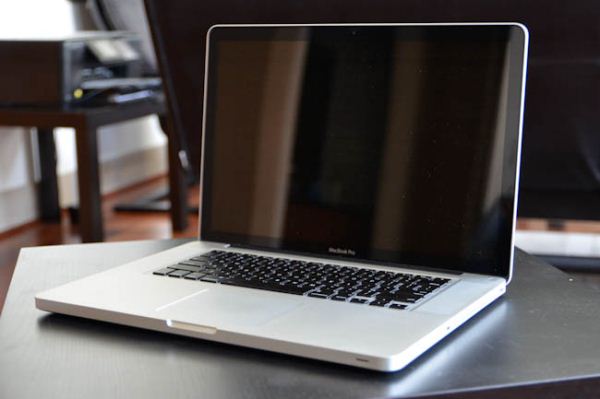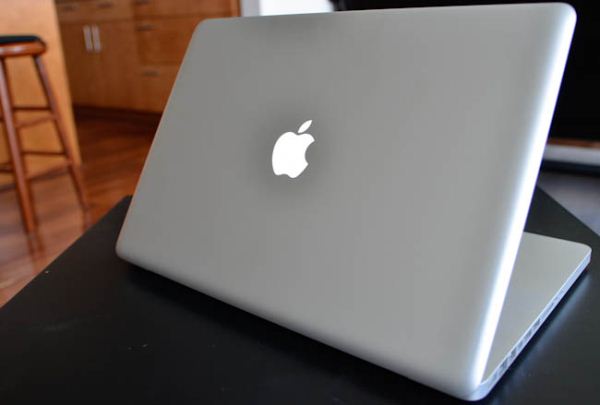The 2012 MacBook Pro Review
by Vivek Gowri on July 18, 2012 2:00 PM EST- Posted in
- Mac
- Apple
- MacBook Pro
- Laptops
- Notebooks
The 2012 MacBook Pro is a pretty intriguing product. It’s the latest and last in a line of standard-setting notebooks that helped shape the direction of the notebook industry over the last 5 years. This design has been around for a while, accompanied by the same general specsheet formula: the latest Intel processors, a performance-class GPU, a high quality display panel, and a $1799 starting price. These things haven’t changed since the original Intel MacBook Pros from 2006 (with the exception of the odd low-end 2009 MBP15, which started at $1599 and came with an Nvidia 9400M IGP).
The unibody MacBook Pro is one of the best engineered portables around, and the longevity of the design speaks to that. But at this point, it’s an aging design. Nearly four years in, the design has endured well, but it retains features that are starting to matter less and less - a DVD drive, Firewire, an IR window for the remote that hasn’t been included with new Macs in years. Possibly even Ethernet. I know some of our editors and readers rely on having an Ethernet connection, but I personally haven’t plugged an RJ45 jack into a notebook in years. Like, five or six years. You can see that Apple agrees - the Retina MacBook Pro has none of those things. The optical drive has been unceremoniously dumped, as has the IR port. The Firewire port and Ethernet jack have been traded for a second Thunderbolt port and an HDMI out (finally, HDMI comes to Macs - hooray for no longer needing those infernal adapters!). Based on my usage model, I make that trade twelve times out of ten. Two ports I never use for one I use regularly and one I will use going forward, and becomes worth more as more Thunderbolt accessories become available.
And when you think about it in those terms, you see where the normal 2012 MBP is flawed - it’s a design that’s rooted in the past, a four year old design with a one year stay of execution. That normally wouldn’t be a problem, but with the future being sold alongside it, it becomes a much more difficult sell. Especially when you consider this: if you were to buy the base 15” MBP and upgrade to a 256GB Samsung 830 SSD and 8GB memory (bringing it to spec-parity with the base rMBP), you’d be approximately $100 shy of the rMBP pricing. That’s $100 for a smaller, lighter notebook that’s just as fast and has a *significantly* better display. If you’re eligible for student discount, that difference is actually zero, because the rMBP has a greater student discount than the base MBP15. The rMBP is pretty pricey, but when you think about it, it’s a pretty good deal.
There are only a few legitimate reasons I can think of to skip the rMBP and get the MBP15, with the most reasonable of them being that you’re very fundamentally opposed to the soldered memory and custom SSD form factor. Another is if you’re highly dependent on a DVD drive and Ethernet and don’t want to pay for or carry around an external SuperDrive or GigE adapter. Or, you have a hard-set $1800 budget and simply don’t care about an SSD, extra memory, or having a good screen (or plan to upgrade them later).
But here’s my take – the 2012 MBP is a great notebook and a very solid portable system. I just don’t want one. For my money, I’ll either save some and get a discounted 2011 MBP15 or spend a bit more to step up to the Retina. And maybe this is telling, but as soon as I was done with the benchmarking and the major part of the writing for this review, I stopped using the MBP and picked up a base Retina. It’s the future, simple as that.












132 Comments
View All Comments
sambamac - Thursday, July 19, 2012 - link
I've been thinking a lot about it. Ok, the retina is a fine screen. But I will go for the 2012 non retina non-glare 1650x1050, because I will put a 750 7200 rpm (only a additional 56$) and an extra 256 SSD for the system ( I will separate the system from the data ). When the 16GB Modules will be available I will upgrade the memory to 32Gb. I really work on an external monitor. 15" is just too small to do edit or retouch fotos. I really need the portable solution, because I travel a lot. And the possible 32Gb will help a lot to boost photoshop work based on dozens of layers.Freakie - Thursday, July 19, 2012 - link
16GB modules wont ever come for DDR3 in the 204 pin form factor (laptop), so give your hopes up now. If you really want the best photoshop performance then you should be switching to a Windows laptop especially since it's easy to put 32GB on a Windows laptop, create a RAMdisk with a good chunk of that and then put your Photoshop Scratch Disk directory on it. (instant 5GB/s transfer rate on your scratch disk by using your RAM instead of a mechanical or solid state drive). Or if you are dead-set on using OSX then you can easily hackintosh OSX on the laptop and still have the more powerful hardware.sambamac - Thursday, July 19, 2012 - link
Why you know that 16GB modules won't ever come? Is there a technical problem?Yeah, it's a good idea with the Ram Disk....
thanks for input!
Freakie - Friday, July 20, 2012 - link
Yeah basically. RAM follows standards and what-not, which means the people who make the RAM have to follow certain guidelines if their want to be able to use the DDR3 label for the RAM. That way RAM is as compatible as possible. As it stands, the DDR3 standards don't really allow 16GB sticks for laptops because the sticks are too small. They can't do 3D stacking of the memory without being out of spec, to my knowledge. And most RAM is still manufactured on large processes like 48-60nm and so they can't just pack more in on the area they have. We probably wont see 16GB sticks for laptops until DDR4.sambamac - Friday, July 20, 2012 - link
Ok, I see! Thank you for these explanations!arkweld - Thursday, July 19, 2012 - link
I just made the same decision. Anandtech opts for the rMBP because it's better value? Really? What a ludicrous statement.For $2300 you get an MBP with hi-res, optical drive, ethernet, FireWire, more storage capacity, expandability and the exact same battery life, processor and RAM as the $2800 rMBP. A unit which has the only advantage of a arguably better display, negligible perfomance increase and a half-pound weight reduction. Anandtech opt to pay $500 more for less capability.
If you want an SSD to boost your performance you can add one to an MBP at any time in any capacity.
If the future is removing features for a screen of dubious value, then we are going backwards. Especially when you are paying $500 for the privilege.
The0ne - Thursday, July 19, 2012 - link
Yea, your consideration for the type of work you do is inadequate. You should be considering Windows laptop for this. You want both the CPU performance and the GPU to handle the 2D/3D side of things. Sure it may not be as light, or any other reasons but you get your work done fast and "easy". Not entirely sure on the easy word but meh :)sambamac - Friday, July 20, 2012 - link
And which system is adequate?jcannon1018 - Thursday, July 19, 2012 - link
Any ideas on how the lower end model would graphically compare to the high-end model? Running at native 1440x900 with Diablo 3, 512 vs 1gig, huge difference?Deepcover96 - Thursday, July 19, 2012 - link
I went back and forth on which one I would get. The Ethernet port almost pushed me towards the Pro, but the better display on the Air made up my mind. Like you said, The Air and the rMBP feel like the future.